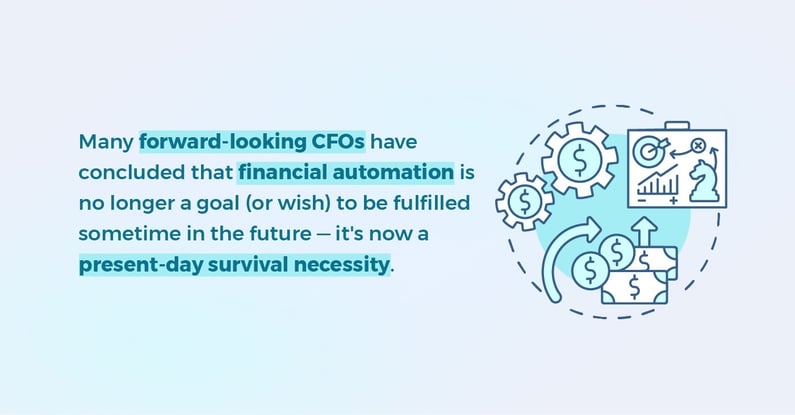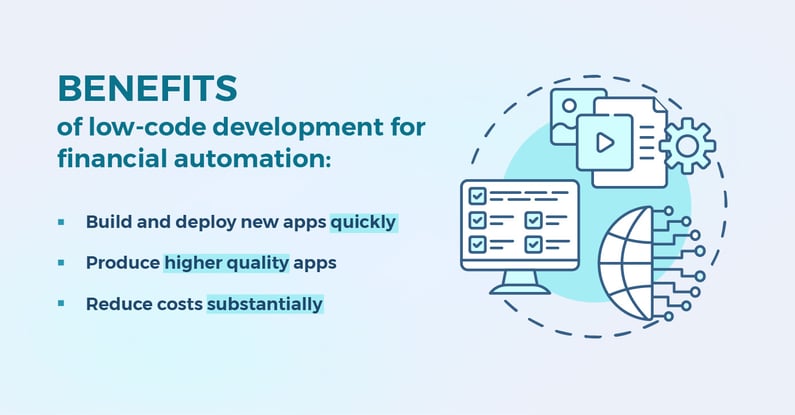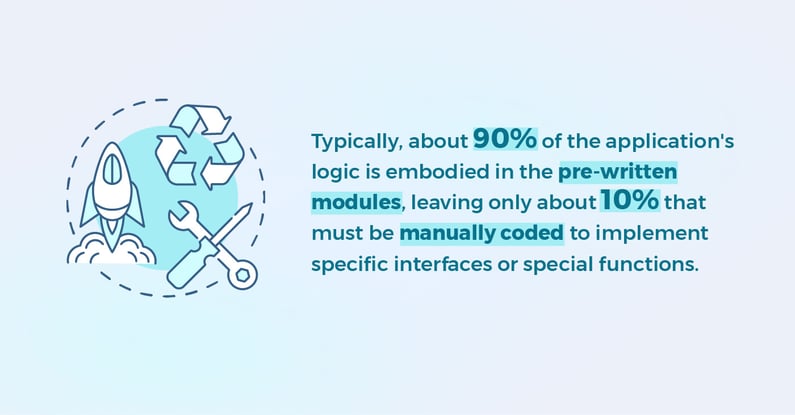Today, the banking and financial sectors are undergoing a technological sea change. In the headline to a recent article in Forbes, Jeff Thomson, the president and CEO of the Institute of Management Accountants, states the case succinctly:
"Accounting and Finance Tech Transformation in Hyper-Drive."
BFSI (Banking, Financial Services and Insurance) companies have traditionally depended on processes in which the participation of human workers is indispensable. However, in this new environment of ongoing digital transformation and disruption, firms that continue to depend on manual processes simply won't be able to keep up with competitors or with the demands of the marketplace. Many forward-looking CFOs have concluded that financial automation is no longer a goal (or wish) to be fulfilled sometime in the future—it's now a present-day survival necessity.

What is financial automation?
Gartner defines financial automation this way:
Finance automation technology integrates machine learning and artificial intelligence for use in areas such as financial analysis, payroll administration, invoice automation, collections action, and preparing financial statements. The use of such automated software reduces the need for human intervention in these activities.
In effect, financial automation is the use of technology to automatically carry out financial tasks that would normally be done by employees. As a report by the McKinsey Global Institute says:
The automation of activities can enable businesses to improve performance by reducing errors and improving quality and speed, and in some cases achieving outcomes that go beyond human capabilities.
Financial automation is showing its worth in a wide range of activities, including Accounts Payable, Financial Planning and Analysis, Account Reconciliation, Accounts Receivable, Payroll Administration, and many more. In fact, according to one McKinsey report, 42% of finance activities can be fully automated using technologies that are already available today.
But for many companies, especially those that don't have large and robust internal software development teams, integrating automation into their financial operations seems out of reach. That's because implementing automation using traditional software development methodologies can be a lengthy and costly undertaking.
Why traditional automation methodologies are no longer adequate
The traditional approach to financial automation involves employing teams of software developers to mount a formal application development project and write custom code to implement the desired automation functionality. Such projects normally take many months, if not years, to complete.
With software developers making a median salary of $110,140 per year, and spending about 75% of their time debugging to find and correct the numerous errors (about 70 per 1000 lines of code) that inevitably occur in any substantial software development effort, the traditional process is too slow, error-prone, and expensive for all but the largest enterprises to undertake. And even they find that most of their large-scale software development efforts fail.
So, how can companies that can't afford to mount massive software design efforts reap the benefits effective financial automation can provide? The answer is low-code development.
The low-code approach makes automation of a wide range of financial processes a viable option for almost any BFSI company.
What is low-code development?
Low-code software development is a methodology that enables users to develop sophisticated business or financial applications with only minimal amounts of hand coding. These platforms feature a collection of pre-written code modules and templates that users can simply drag and drop onto the visual canvas of a user-friendly Graphical User Interface (GUI) to design and implement automated workflows.
Typically, about 90% of the application's logic is embodied in the pre-written modules, leaving only about 10% that must be manually coded to implement specific interfaces or special functions. This allows low-code financial applications to be produced much more quickly, and with far fewer errors, than with traditional software development methods.
Benefits of low-code development for financial automation
The list of low-code benefits is long, and includes such items as increased productivity, improved agility, enhanced flexibility, greater competitiveness, and a better customer experience. But let's focus on three that are perhaps the most impactful.
1. Low-code allows you to build and deploy new apps quickly
Because only about 10% of an app's functionality has to be hand coded, low-code development can be as much as 10 times faster than traditional methods. A good example is a project undertaken by Planet, a payments service provider serving customers worldwide.
Planet was selected to implement an electronic Tax Free system for the United Arab Emirates. When they discovered that there was no ready-made solution available, Planet decided to partner with eSystems to create a low-code solution. Their experience illustrates the speed with which low-code apps can be created and deployed:
"It only took us 3.5 months from winning the quotation to completing our new electronic Tax Free system. This would not have been possible without low-code technology."
Ingi Arnarson, Head of Product Management at Planet
2. Low-code produces higher quality apps
One of the greatest advantages of the low-code approach is that it allows actual users, such as accountants, who may have little or no coding experience but are experts in the process being automated, to design and implement their own financial automation apps. The results often achieve the purpose better than if IT professionals were driving the design.
3. Low-code reduces costs substantially
Less time spent on development; fewer errors because there's less hand coding; increased productivity. That all equates to significantly reduced costs for low-code projects. For example, one company reported cost savings of 39% from its use of a low-code platform.

Steps toward financial automation
If you're considering financial automation to turbocharge your company's operations, there are several steps you should take to get started:
1. Identify opportunities to automate
Some processes are more suitable for automation than others. Do your homework to determine which of your processes might be good candidates to be automated.
2. Get stakeholders on board
If there's to be any significant degree of financial automation in your company, the stakeholders in many areas will have buy in. So, start by sharing the extraordinary benefits of process automation, especially when done the low-code way, with those who will be impacted by, or will participate in, its adoption.
3. Develop the automation plan
The last thing you want to do is to start a process of financial automation on an ad hoc basis. Instead, you'll want to develop a comprehensive plan so that before you start, you and your stakeholders know where you're going and how you'll get there.
Financial automation is worth the effort!
The IBM Institute for Business Value – Future of Work Study, 2020 declares that:
Over the past three years, companies that scaled intelligent automation across their enterprises outperformed their peers in profitability, revenue growth and efficiency. And that performance gap is expected to widen over the next three years.
Financial automation is your first step in positioning your business for the future and focusing on long-term goals. If you'd like your company to reap the benefits financial automation can provide, eSystems can support you from step 1 to the full digital transformation you want to achieve. To get started with your transformation, contact us today.

WRITTEN BY: Mika Roivainen | Chief Customer Officer




COMMENTS